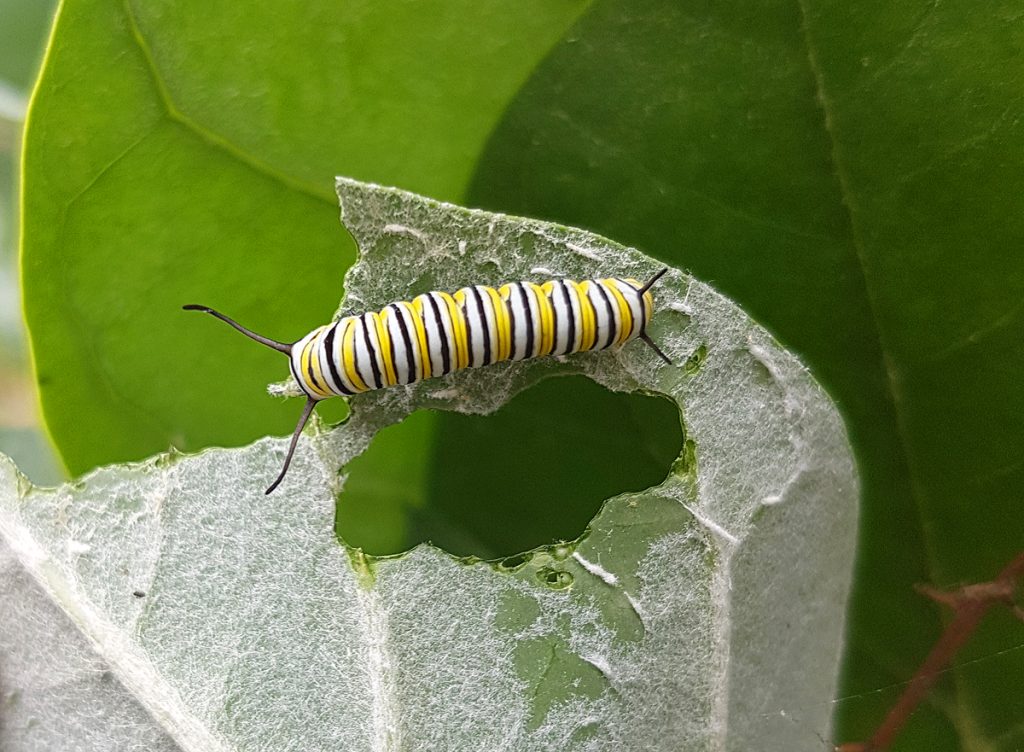
Not too much to say here, but I figured some people may be curious on the timeline between when you plant milkweed, and when Monarchs will find it. I am only one data point, but here it is: it took about three weeks for Monarchs to find my Giant Milkweed after I planted it.
It’s pretty common knowledge these days that the beautiful Monarch butterfly (Danaus plexippus) is becoming threatened by habitat destruction. They have an iconic migration from Central and South America up through North America in massive numbers. But those numbers are declining significantly. Something of a movement has begun among gardeners, to plant more milkweed along their migration routes (Florida is a significant one) to help raise their numbers. Milkweed is the sole food of Monarch caterpillars.
Native or Exotic?
Most milkweeds that you’ll find at a large nursery or a big box store are not native to Florida. While this isn’t necessarily a huge deal, I’ve read that non-native milkweeds can actually be detrimental to Monarchs (see this article, and this one). The reason is that the most common non-native, Tropical Milkweed, stays green much longer into the fall and winter than the native milkweeds do. This appears to both harbor a worrisome disease Ophryocystis elektroscirrha, as well as confuse the breeding vs migrating pattern of the butterflies. For this reason, I first tried to buy native milkweeds.
I bought some native milkweed (Asclepias verticillata) from www.mailordernatives.com. Everything arrived healthy and undamaged, except for one, which they promptly replaced. A+ service from them — I’d have no hesitation to buy from them again. However, the milkweed did not last very long at all. The Monarchs found it much faster then three weeks (though I don’t recall how long), and within no time at all the milkweed was totally covered with caterpillars. The plants were rather small (a reality of buying milkweed online), so it didn’t take more than a day or so for the caterpillars to eat the milkweed right down to the ground. And since they found it so fast, the roots didn’t have time to get established. So the milkweed never really came back. Welp, that was the end of that experiment.
Exotics are okay if you’re far enough south
But as some time has passed, I’ve learned that it should be okay for us to plant non-native milkweeds south of Orlando (see this article). Things often stay green throughout the winter down here, including some of our native milkweeds. For that reason, South Florida already plays host to a non-migrating Monarch population. Long story short, non-deciduous milkweeds are not a problem here! So this time, I opted for Giant Milkweed (Calotropis gigantea). They are native to India. But, they can be obtained fairly large for a reasonable price. I figured if the plant is large from the get-go, it may not be a death sentence if the Monarchs find it quickly. They’ve found it decently fast, and there are already three caterpillars, so time will tell!
And enjoy a few more photos of as a reward for reading to the end!


